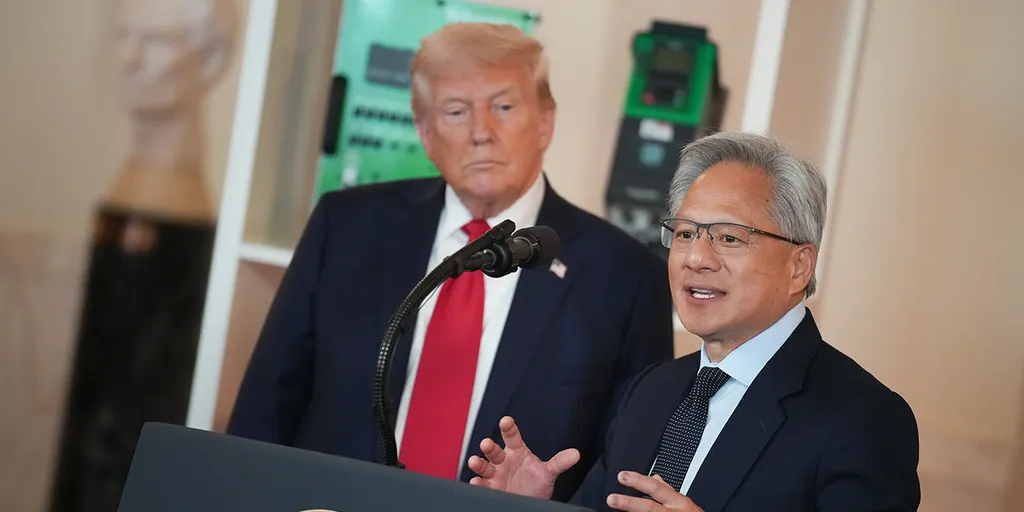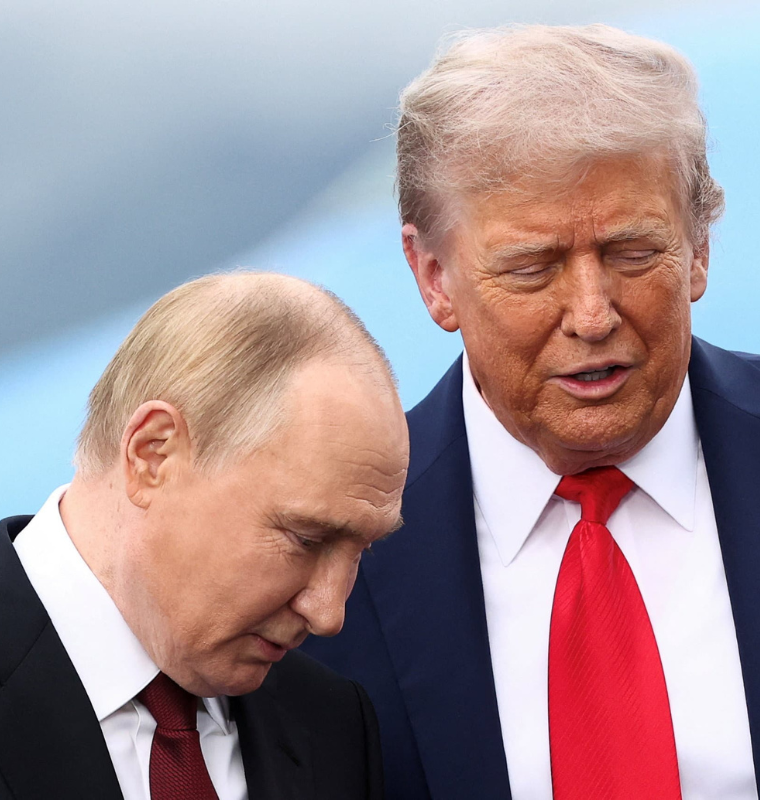Trump Hints at Discussing Nvidia’s Next-Gen ‘Blackwell’ AI Chips with China’s Xi During Summit
Trump Hints at Discussing Nvidia’s Next-Gen ‘Blackwell’ AI Chips with China’s Xi During Summit
By
Calder Monroe
Last updated:
October 29, 2025
First Published:
October 29, 2025

Getty Images
U.S. President Trump has indicated he may raise the topic of Nvidia’s advanced Blackwell-architecture AI chips in his imminent face-to-face with China’s Xi Jinping. The announcement comes amid mounting tension over high-end semiconductor exports, technology rivalry with China, and the strategic value of next-generation computing hardware.
What Trump Said
During a media scrum ahead of the meeting, Trump stated:
“We’ll be speaking about Blackwell, it’s the super duper chip.”
He went on to claim that the U.S. is “about 10 years ahead of anybody else in chips — in the highly sophisticated chips”, and said:
“I think we may be talking about that with President Xi.”
In referencing Nvidia’s “super duper chip”, he appeared to point to the company’s GB200 Grace-Blackwell Superchip or other Blackwell-based processors — its most advanced AI hardware to date.
The Chip Landscape: Nvidia, Blackwell & China
Nvidia’s Blackwell architecture represents its newest generation of GPUs (graphics processing units) used for training and running large-language models and other AI workloads. Broadly speaking:
- The Blackwell line follows on from previous generations (such as the Hopper and Ampere series).
- These chips power major AI players (for example, the likes of OpenAI, Google, Meta) and are central to global AI infrastructure.
- Meanwhile, China has been restricted from importing many of Nvidia’s highest-end chips under U.S. export-control regimes.
For Nvidia in China:
- Exports of its most advanced chips to China have long been tightly regulated.
- In July 2025, the U.S. allowed Nvidia to resume sales of its H20 GPU (designed for China’s market under restrictions) after licences were cleared.
- Despite that, Beijing took steps to prevent Chinese companies from importing those very chips, telling major domestic tech firms to halt purchases of Nvidia’s RTX Pro 6000D (a China-specific version).
- The CEO of Nvidia, Jensen Huang, stated the company is “100% out of China” in terms of market share due to the ban.
Experts note that the interplay of U.S. export controls, China’s retaliatory bans, and Nvidia’s strategy point to a larger high-stakes game in the global chip war.
Why the Timing Matters
The timing of Trump’s comments is significant for several reasons:
- They come ahead of a widely anticipated summit between Trump and Xi, where technology trade is expected to loom large.
- They reflect the U.S. ambition to maintain a lead in advanced semiconductor technology — Trump’s claim of being “10 years ahead” underscores how high the stakes are seen.
- They arrive as China tightens its own regulation: Beijing’s ban on Nvidia chip imports signals it is not simply a passive receiver but an active participant in shaping tech-trade flows.
- They potentially open the door to negotiations over downgraded versions of the Blackwell chips. Reports suggest that Washington may consider allowing a version of Blackwell for China with a 30–50 % performance reduction.
What Could Be on the Table
Several outcomes may emerge from this conversation:
- Trump may seek to broker access for Nvidia to send a less-capable version of the Blackwell chip into China, thereby allowing some commercial flow while preserving U.S. technological edge.
- China might demand access to these chips as part of a broader tech-trade deal; conversely, Beijing can leverage its ban as bargaining power.
- The terms could include revenue-sharing or export-licensing mechanisms. Earlier reporting highlighted a deal where U.S. chip exports to China required the companies to pay a share of Chinese-market revenues back to the U.S. government.
- Strategic risk: If China gains access to too-powerful chips, it could accelerate its domestic AI and semiconductor capability — this is exactly what U.S. regulators fear.
Implications for Industry and Geopolitics
For the chip industry:
- If Nvidia wins access to the Chinese market even partially, the commercial upside is considerable — China hosts roughly half of global AI developers.
- On the flip side, the risk of losing technological advantage looms large if China catches up or acquires too advanced hardware.
For geopolitics:
- Semiconductor leadership has become a pillar of U.S.–China rivalry. The outcome of any negotiations will affect how global tech supply-chains evolve.
- The move reflects how export-controls, trade policy, and national-security concerns are now deeply intertwined with corporate strategy.
What to Watch Next
- Monitor the results of the Trump-Xi summit: Will chip access be explicitly discussed or only implied?
- Watch for announcements from Nvidia and U.S. regulators on export licences or new product versions tailored for China.
- Keep an eye on Chinese regulatory moves: bans, sanctions, or domestic-chip investment pushes that respond to U.S. exports.
- Track how Nvidia’s business reports adapt: any indication of China-market strategies, product write-downs, or revised revenue expectations.
President Trump’s signal that he might raise Nvidia’s Blackwell AI chips with Xi Jinping underscores how central advanced semiconductors have become to global trade, technology leadership, and geopolitical rivalry. As the U.S. tries to maintain its lead and China manoeuvres to catch up, the outcome of this one line of discussion could ripple across industries, markets and nations.
Popular articles
Subscribe to unlock premium content
The Business Behind Handcrafted Japanese Knives That Sell for Thousands

How Calm Turned Bedtime Stories Into a $1 Billion Wellness Empire

The Rise of AI Digital Pets as a Billion-Dollar Fantasy

The Business Behind Handcrafted Japanese Knives That Sell for Thousands

How Calm Turned Bedtime Stories Into a $1 Billion Wellness Empire

The Business Behind Handcrafted Japanese Knives That Sell for Thousands









